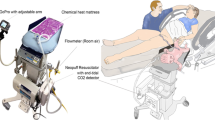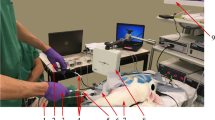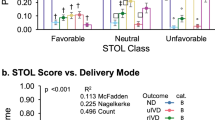Abstract
Objective:
To measure performance, fidelity and preference of two emergency umbilical vessel catheter (eUVC) simulation models.
Study Design:
A randomized crossover trial of senior pediatric residents randomized to place an eUVC first using a real cord (RC) or simulated cord (SC), and then place an eUVC using the other model. The eUVC placement times were recorded and analyzed. Subjects rated physical and functional fidelity and preference for each model.
Results:
The eUVC placement time (mean±s.d. s) was slower in RC vs SC (153 s ±71 vs 88 s ±35, P<0.001), however, there was no difference in eUVC placement time in the group that worked with SC first (115 s ±36 vs 97 s ±35, P=0.161). Physical and functional fidelity of RC were rated higher than SC (P<0.001), and RC were preferred.
Conclusion:
RC has higher physical and functional fidelity, and are preferred for training by pediatric residents, despite longer placement times.
This is a preview of subscription content, access via your institution
Access options
Subscribe to this journal
Receive 12 print issues and online access
$259.00 per year
only $21.58 per issue
Buy this article
- Purchase on Springer Link
- Instant access to full article PDF
Prices may be subject to local taxes which are calculated during checkout



Similar content being viewed by others
References
Accreditation Council for Graduate Medical Education. Program Requirements for Graduate Medical Education in Pediatrics. Available at https://www.acgme.org/Portals/0/PFAssets/ProgramRequirements/320_pediatrics_07012015.pdf. (Accessed on 1 July 2013).
Perlman JM, Risser R . Cardiopulmonary resuscitation in the delivery room. Associated clinical events. Arch Pediatr Adolesc Med 1995; 149 (1): 20–25.
Kattwinkel J Textbook of Neonatal Resuscitation, 6th edn. American Academy of Pediatrics and American Heart Association: Elk Grove Village, IL, USA, 2011.
Lopreiato J, Sawyer T . Simulation-based medical education in pediatrics. Acad Pediatr 2015; 15 (2): 134–142.
Sawyer T, White M, Zaveri P, Chang T, Ades A, French H et al. “Learn, See, Practice, Prove, Do, Maintain”: an evidence-based pedagogical framework for procedural skill training in medicine. Acad Med 2015; 90 (8): 1025–1033.
Hamstra SJ, Brydges R, Hatala R, Zendejas B, Cook DA . Reconsidering fidelity in simulation-based training. Acad Med 2014; 89 (3): 387–392.
Maran NJ, Glavin RJ . Low-to high-fidelity simulation—a continuum of medical education? Med Educ 2003; 37 (suppl 1): 22–28.
Curtis M, DiazGranados D, Feldman M . Judicious use of simulation technology in continuing medical education. J Contin Educ Health Prof 2012; 32 (4): 255–260.
Gagné RM . Training devices and simulators: some research issues. Am Psychol 1954; 9 (7): 95–107.
Sawyer T, Strandjord TP, Johnson K, Low D . Neonatal airway simulators, how good are they? A comparative study of physical and functional fidelity. J Perinatol 2016; 36: 151–156.
Wellek S, Blettner M . On the proper use of the crossover design in clinical trials. Dtsch Arztebl Int 2012; 109 (15): 276–281.
Sawyer T, Sierocka-Casteneda A, Chan D, Berg B, Lustik M, Thompson M . Deliberate practice using simulation improves neonatal resuscitation performance. Simul Healthc 2011; 6 (6): 327–336.
Rajani AK, Chitkara R, Oehlert J, Halamek L . Comparison of umbilical venous and intraosseous access during simulated neonatal resuscitation. Pediatrics 2011; 128 (4): e954–e958.
Author information
Authors and Affiliations
Corresponding author
Ethics declarations
Competing interests
The authors declare no conflict of interest.
Rights and permissions
About this article
Cite this article
Sawyer, T., Starr, M., Jones, M. et al. Real vs simulated umbilical cords for emergency umbilical catheterization training: a randomized crossover study. J Perinatol 37, 177–181 (2017). https://doi.org/10.1038/jp.2016.194
Received:
Revised:
Accepted:
Published:
Issue Date:
DOI: https://doi.org/10.1038/jp.2016.194



